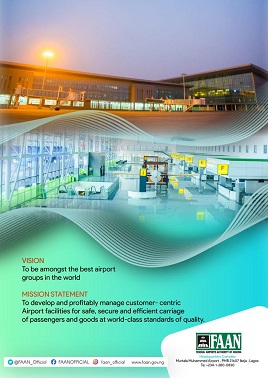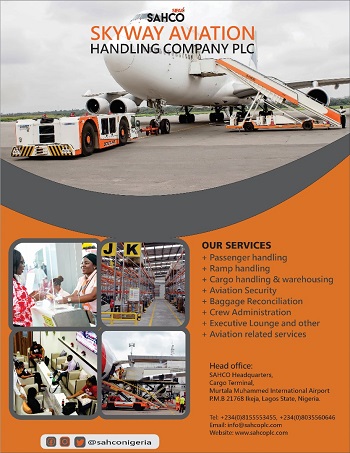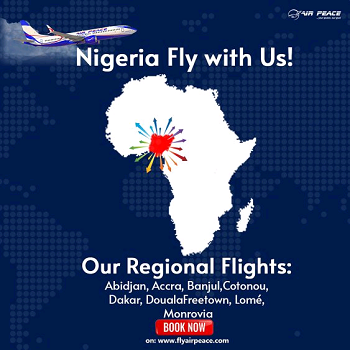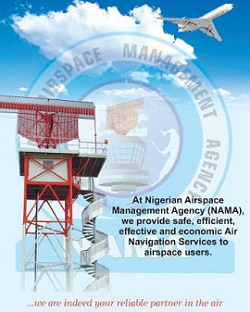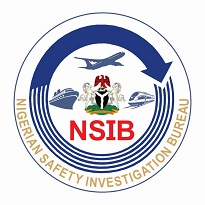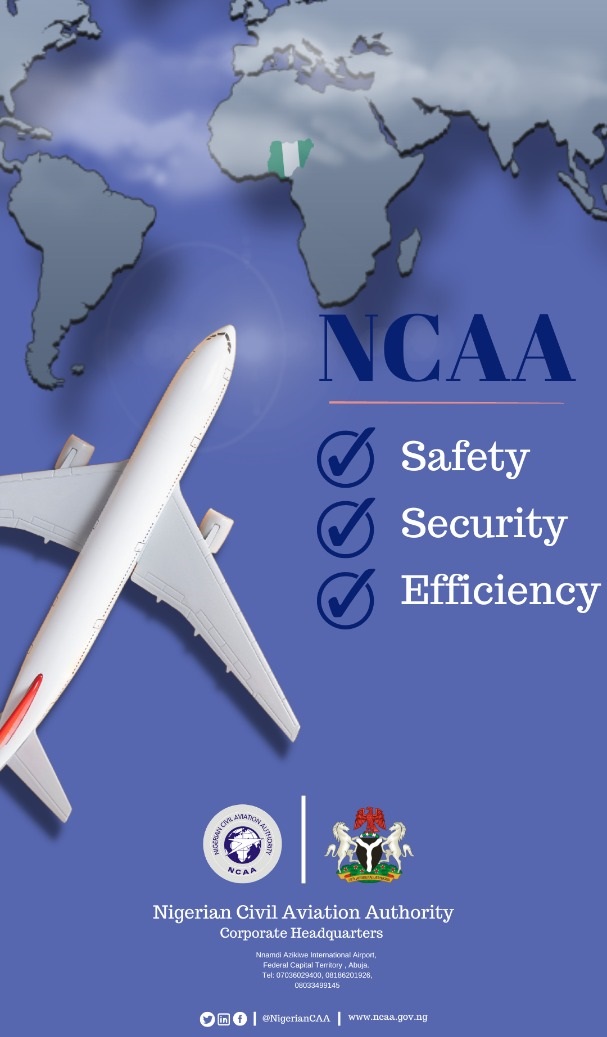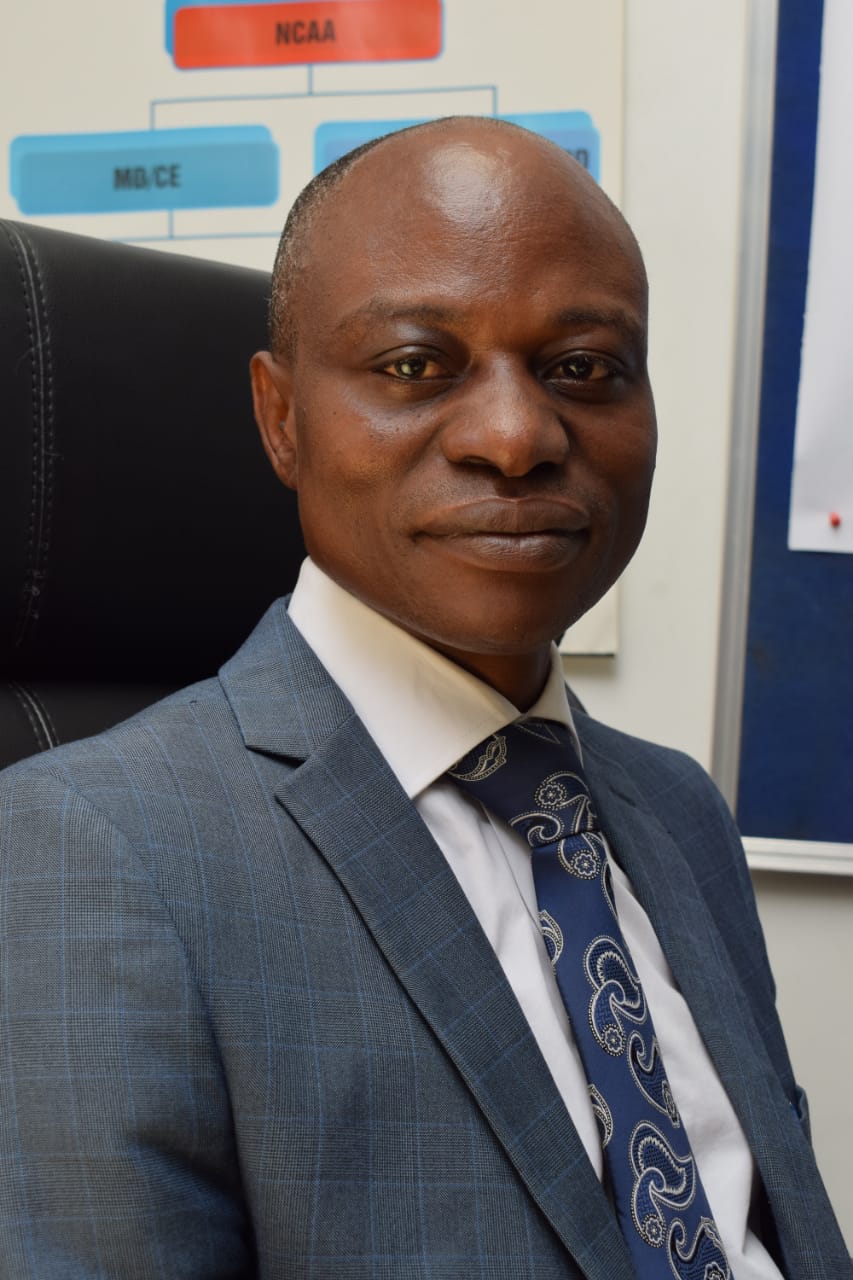
Acting Managing Director of Nigerian Airspace Management Agency (NAMA), Engr. Mathew Pwajok has said that Nigeria can beat her chest and tell the world that she has effective voice communication and navigation coverages across the length and breath of her airspace.
Pwajok affirmed that the initial air-ground voice communication challenges noted between Pilots and Air Traffic Controlller (ATC) have been put to rest even as he said every airport in the country has been installer with a minimum of Category Two Instruments Landing System (CatII ILS).
The NAMA boss said such the voice communication challenges were not unusual where new airports which were not captured in the initial voice communication network, are coming up.
Pwajok told aviation journalists during an interactive meeting over the weekend that NAMA has been able to close the gaps by expanding its satellite locations from eight to 14.
“We have been able to complete and extended voice communication project, it is a project to improve the voice communication in the upper airspace in the country where we have some few challenges.
“The challenges we had were not unusual where we have new airports. As new airports come on stream, new enroutes connecting them are created and these were not part of the initial communication network, therefore creating a few gaps here and there and we have to expand the air ground communication, We earlier had eight satellite stations in eight locations, we have to expand the stations to 14,” he said
The new addition, according to the NAMA boss were Kaduna, Jos which were restored and expanded to Benin, Enugu, Calabar in addition to other locations such as Ilorin, Sokoto, Maiduguri, Abuja, Kano, Enugu, Port Harcourt, totaling 14.
He added that a satellite desk has been fully deployed in all the 14 stations for the Very Small Apperture Terminal (VSAT) to boost air to ground voice communication network in the country
“We have fully deployed a satellite desk station for the VSAT in these 14 locations to give a complete the voice communication air – ground networking of Nigeria for the upper air space control in Kano and in Lagos.
This has improved significantly the pilots – controllers voice communication within the upper airspace where we had few challenges in the past.
On communication, we also started a projects to improve communications in 12 control towers and we are replacing the voice communication and control system that include the 12 domestic airports to enhance safety.
On navigation, Pwajok said NAMA has done tremendous investment because some of the facilities had become obsolete. According to him: “we have replaced all the Instruments Landing System (ILS) with a minimum of Category Two ILS.
The Category Ii ILS gives capability approach and landing visibility up to 300 metres as against the Category 1 that required 800 metres for the approach and landing.
Presently, we have installed the Cat II instrument landing system in over 10 airports, we have the one of the Domestic runway in Lagos, we have installed two ILS in Benin, Enugu, Sokoko, Maiduguri, Abuja and in Lagos.
We have installed Cat 2 in Yola, Sokoto, Jos, Akure, Minna and Ilorin in addition to the ones I cannot remember to mention.
We are installing additional three Cat3 ILS in Katsina, Kano and Port Harcourt. This is in addition to the Cat III that had already been installed in the Lagos and Abuja airports.
He added, “For navigation, we have done the VOR (Very High-Frequency Omni-Directional Range (VOR), a ground-based electronic system that provides information for high and low altitude routes and airport approaches, it is a navigational guidance facilities in over 10 airports as well which include in Maiduguri, Jos, Kano, Yola, Minna, Benin, Akure, Ilorin, Lagos amongst others.
These facilities are brand new VOR equipment which have the capacity for aircraft guidance facilities within the country.
We are still ongoing with the deployment of new systems of navigation to enhance access to our airports and enhanced enroutes navigation nationwide.
We have also done Satellite Based Navigation to provide a backup system for the conventional navigation based in ground system that I had just mentioned.
The NAMA boss said what have done in the four international airport were to provide the Performance Based Navigation (PBN) Approaches on both sides of the runway to provide a back up on the runway in case there was a failure on the ground navigational systems, ” we will use the Global Positioning Systems (PBS) to approach and land on the runway.”
Except for Jalingo Airport which lacks survey plans, Pwajok said NAMA has done the PBN in over the 31 airports including all the Federal and states airports. He said this included NCAT Zaria, Military Airports in Port Harcourt and Makurdi.
He concluded that NAMA is already working in the Nigerian airports to assist them in installing the PBN in Kaduna airport.
He added that the survey has been done while procedures are currently being developed to ensure that any airports in Nigeria can be accessed using PBN facilities or the SBN facilities to increase access and visibilities to this airport.


